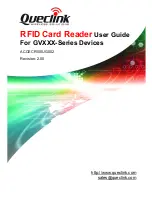
Functional description
14
Ultra Sensitive luminescence mode
Figure 7. Ultra Sensitive luminescence measurement
Ultra Sensitive luminescence uses a very high sensitivity luminescence
PMT as the detector. It has extremely low background, high dynamic range
and spectral response from 300 nm up to 650 nm. The detector has no
optical components and the emission light is collected directly from the
well.
The detector can be lowered so that it is just above the plate, thus reducing
the crosstalk between wells. The detector has an aperture to define the area
of the plate it can view. Currently there are three different aperture sizes: for
96, 384 and 1536-well plates. They are optimized to give the highest
possible signal and minimize crosstalk between wells. This aperture can be
changed by hand.
There is a sensor to identify the presence of the aperture. Another sensor
allows precise plate height determination to allow the aperture to come very
close to the plate without hitting it.
Fluorescence Intensity
In fluorescence intensity measurements the sample is excited by the
flashlamp and generated fluorescence is read by a photomultiplier tube in
gated analog mode. In analog detection mode the high voltage of the
photomultiplier i.e. the gain, is a parameter that can be set by the user.
Changing the parameter value from 1 to 1024 changes the gain from 50000
to about 10 million i.e. over two orders of magnitude.
The basic measurement needs only one flash, but for higher accuracy it
could be useful to use more flashes. The integrated analog signal from the
photomultiplier and the reference photodiode are always read after every
flash. For one measurement (one or more flashes) these readings are
summed (not averaged). The reference signal is then compared to the
original reference value with the label and the results are corrected for the
same excitation energy.
All FI-measurements are done in epi-mode (top or inverted) i.e. excitation
from above and reading from above or excitation from below and reading
from below. The general mirror module with the 50/50 beamsplitter mirror
can be used for all labels independent of the excitation and emission
wavelengths. For dual detection the dual general mirror module is needed.
For reading from below, the same mirror module can be installed into the
bottom head but now the mirror module information has to be given through
the user interface and the instrument has no means to check the correctness
of this information. For optimized FITC or similar labels a special mirror
module is available with a dichroic mirror. The emission signal with the
Содержание EnVision
Страница 1: ...EnVision Multilabel Reader 2104 9030 02 March 2008 INSTRUMENT MANUAL ...
Страница 2: ......
Страница 4: ......
Страница 6: ......
Страница 11: ...1 Chapter 1 Introduction ...
Страница 12: ...2 ...
Страница 15: ...5 Chapter 2 Functional description ...
Страница 16: ...6 ...
Страница 45: ...35 Chapter 3 Information about user instructions and warnings ...
Страница 46: ...36 ...
Страница 57: ...Information about user instructions and warnings 47 Picture 10 Laser warning label inside the instrument ...
Страница 59: ...49 Chapter 4 Routine maintenance ...
Страница 60: ...50 ...
Страница 75: ...65 Chapter 5 Specifications ...
Страница 76: ...66 ...
Страница 86: ...Specifications 76 ...
Страница 87: ...77 Chapter 6 Quality information ...
Страница 88: ...78 ...
Страница 90: ...80 ...
Страница 92: ...82 ...
Страница 93: ...83 Chapter 7 Glossary ...
Страница 94: ...84 ...
Страница 104: ......
Страница 105: ...95 Chapter 8 Installation ...
Страница 106: ...96 ...
















































